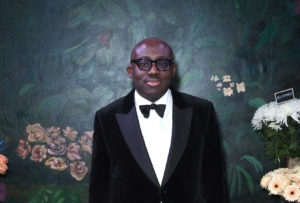Gabrielle “Coco” Chanel destroyed the restrictive, oppressive tenets of Victorian dress with a zeal that was personal. The “exterminating angel of nineteenth century style” released the Modern Woman, an individual designed in her own mould. It was her lifestyle, as well as her sense of style, that shaped her work and sold it. She pioneered a process we now take for granted, turning herself into a brand.
The curators of the V&A’s new retrospective have done a superb job of assembling the things. The suits, shoes, scarves, perfume and jewellery; so much in the show looks as chic as it did when it left Chanel’s studio. Yet the exhibition claims to give us “a window onto the life”. And, having spent more than four years immersed in that life researching Chanel: An Intimate Life, I left feeling that the woman at the centre has just slipped quietly out of the room.
The show fails to capture Chanel’s most crucial motivator, which was not her sex but her class, or lack of it. Her early years were defined by deprivation. She was the daughter of street vendors, and after her mother died, her semi-pauper ratbag of a father dumped her in a convent orphanage. Subjected to humiliating charity for seven years, she fled at the age of 18, later saying: “I knew no father, no mother, no home and no love.” Sustained by enormous pride, her drive to succeed was ferocious; it turned her into a revolutionary.
Unfortunately, Chanel has become better-known in recent years as a Right-wing collaborator. Space is given at the V&A to certain false arguments, popularised by Hal Vaughan’s book, Sleeping With the Enemy: Coco Chanel’s Secret War, which accuses her of being a Nazi spy. It’s true that Chanel’s record during the war was appalling: she was brazen enough to live in the Ritz, which had been requisitioned by Nazi officers, with a German lover who definitely spied for the Nazis even if he wasn’t an officer.
But Hal Vaughan claims that Chanel was a code-named active agent of the Abwehr. He doesn’t have paper evidence for this — there is only interpretation and guilt-by-association. He doesn’t recognise that, as Serge Klarsfeld, the well-known Nazi hunter, said, just “because she had a spy number doesn’t in any way mean that she was involved personally”.
The exhibition does at least tell the other side of the story, highlighting new evidence that Chanel was, in fact, working for the French Resistance. That we cannot say which side she was more sympathetic to is typical: Chanel was a shapeshifter. Even though she was claimed by the establishment long ago, her image becoming synonymous with conventional elegance, she was actually a radical, mysterious outsider. Her friends and lovers were the modernist artists hellbent on disrupting social norms: Pablo Picasso, Jean Cocteau, Igor Stravinsky, Sergei Diaghilev. Chanel, like them, was out to undermine the old order, the suffocating social hierarchies, which had put her, the illegitimate, dirt-poor country girl, at the bottom of the pile.
At the V&A, an exquisite long, red evening dress gleams in the dark, both fitted and flowing. But it’s not the silk of haute couture; it’s the humble cotton velvet of working women’s clothes. Chanel’s jersey sweaters are decorated with fur — that traditional status marker, the rarer and more expensive the better — but it is the fur of the downmarket rabbit. Her rich clients scooped them up. She devised poverty for billionaires, unable to resist playing the game of social subversion. This notion of dress is now popular: these days, it’s all about “Stealth Wealth”. But it was Chanel who taught us to think like this. “People,” she said, “confuse poverty with simplicity.”
In my favourite photo of her, she wears a cream, slouchy jersey top. With one hand jammed into a large patch pocket and informally done-up dark hair, her only decoration is a flower pinned at the waist. This was 1913, when the undyed, utilitarian jersey she used for these long, V-necked “sweaters” was unheard of in fashionable society. Rich women soon queued to buy them. Pockets were considered unladylike, largely confined to working women. But Chanel defiantly slapped them on and into her clothes. Black dresses had hitherto been worn only by servants or for mourning, but Chanel’s iconic designs were quickly copied and became an essential in every woman’s wardrobe. American Vogue named one black dress “The Ford”, because it was as ubiquitous as the model of car.
Haute couture is by definition exclusive, but deep down Chanel never forgot that, unlike all her clients, she was a woman of the people. Nor was she allowed to forget it: in 1923, when the vastly wealthy Singer heiress, Winaretta, was asked why Chanel wasn’t invited to a party she was throwing — at which guests included Chanel’s friends Stravinsky and Diaghilev, and the whole of the Ballet Russes — Singer said: “Oh, I don’t entertain my tradespeople.” Chanel was a dressmaker, not an artist.
She got her revenge. By the end of the Twenties, her enormous creative success, and dazzling charisma, had made her one of the most sought-after figures in Parisian society. Her friend Paul Morand remembers what came later: “those supper parties at La Pause” — Chanel’s country home — “without servants, at which one served oneself from plate warmers lined up on the game table. Never was snobbery better directed against oneself.”
But Chanel was forever riddled with class anxiety. She loathed actual selling; it brought out her well-hidden, deep insecurity. From the outset, she found a way around this, one that doubled up as a method of preserving her mystique. She stayed off the shop floor, saying that, “every customer seen is a customer lost”, and persuading others to sell what she produced.
By keeping herself at a distance, Gabrielle helped construct the myth of Coco Chanel. It helped that she was an inveterate fantasist about her past and her present. When she told the story of her life, her father’s unbearable abandonment didn’t happen. Her shameful incarceration in the convent became a miserable stay with old aunts. She never admitted that she was addicted to morphine. She distorted the truth to survive psychically. As her biographer, I had to learn how to read between her lines.
More than 50 years after her death, the Chanel Corporation seductively perpetuates the Coco myth. Every new piece is a homage to the original. Each season, there is the quilted bag, the suit, the jacket. These are altered, added to, made more “now” — but are always recognisable. Karl Lagerfeld, for instance, made a classic Chanel jacket, and then replaced the demure skirt with a full tulle one, placing it over bovver boots and holed tights.
Chanel always said: “I am against fashion that doesn’t last.” Unlike most of her fellow designers, she always thought that any fashion not adopted by the majority of women was a failure. I think if Chanel were to walk, inevitable fag in her mouth, through the V&A’s exhibition, she would feel again the tension that motivated her whole body of work. On the one hand, the rebel would delight to see that she’d irrevocably destroyed so many of her era’s established precepts of good taste. On the other, she’d be triumphant that this beautiful temple of the establishment, one of the great museums of the world, is honouring that very destruction. Accepted as part of our culture, we no longer notice her innovations; but they endure, and continue to be made new.
Disclaimer
Some of the posts we share are controversial and we do not necessarily agree with them in the whole extend. Sometimes we agree with the content or part of it but we do not agree with the narration or language. Nevertheless we find them somehow interesting, valuable and/or informative or we share them, because we strongly believe in freedom of speech, free press and journalism. We strongly encourage you to have a critical approach to all the content, do your own research and analysis to build your own opinion.
We would be glad to have your feedback.
Source: UnHerd Read the original article here: https://unherd.com/



